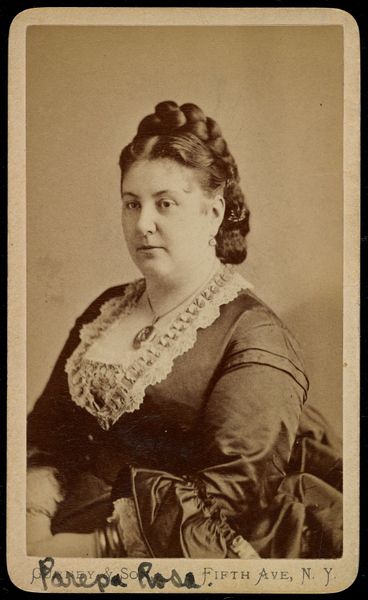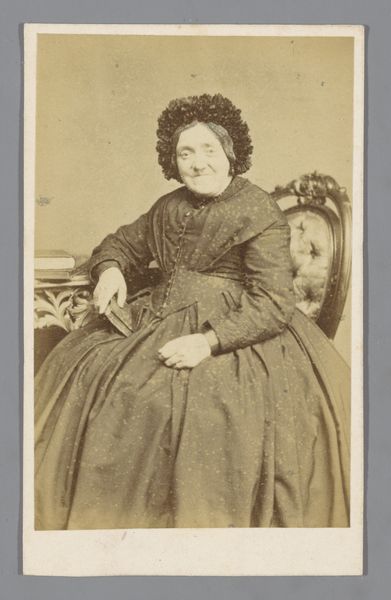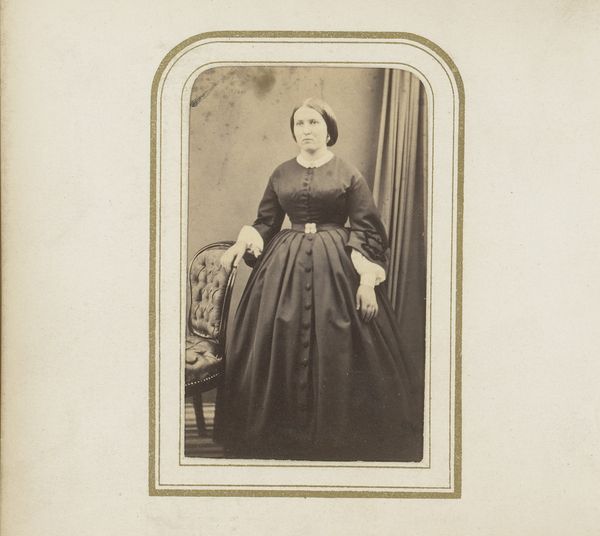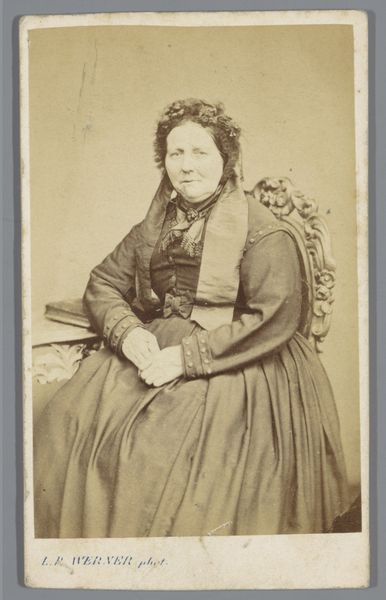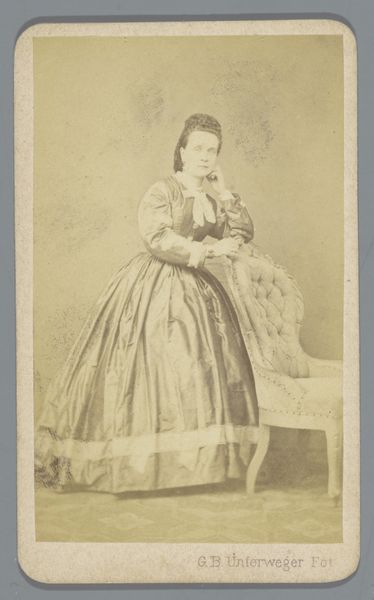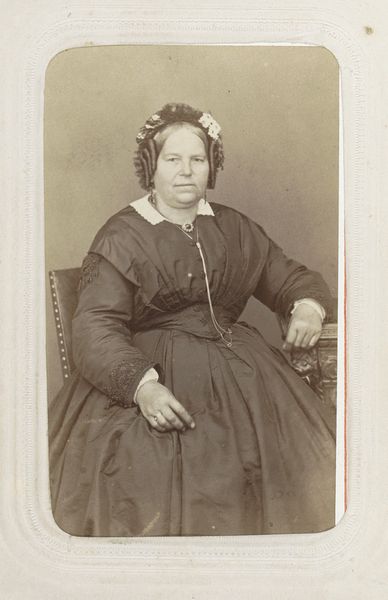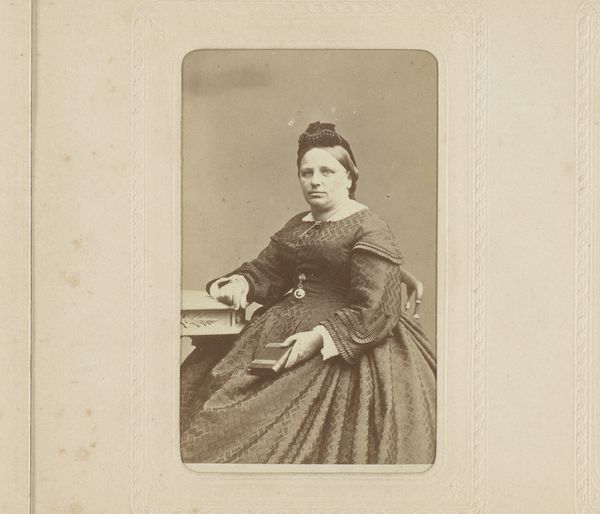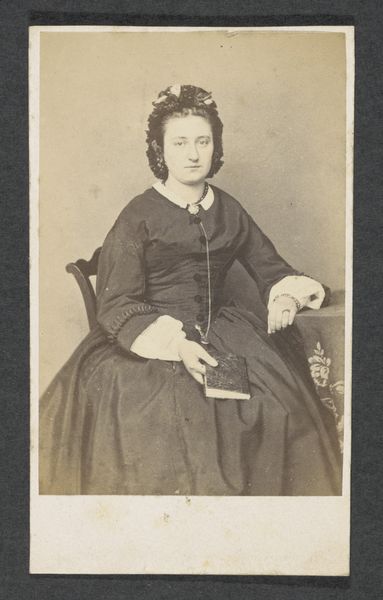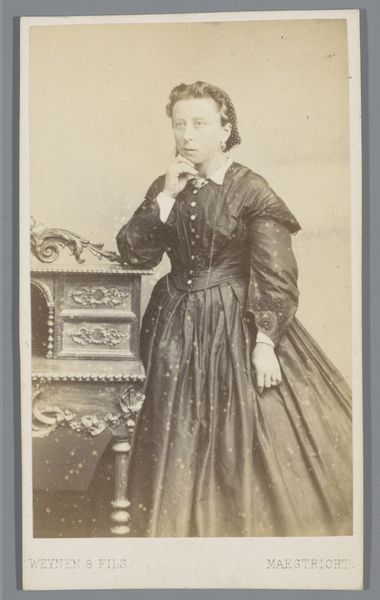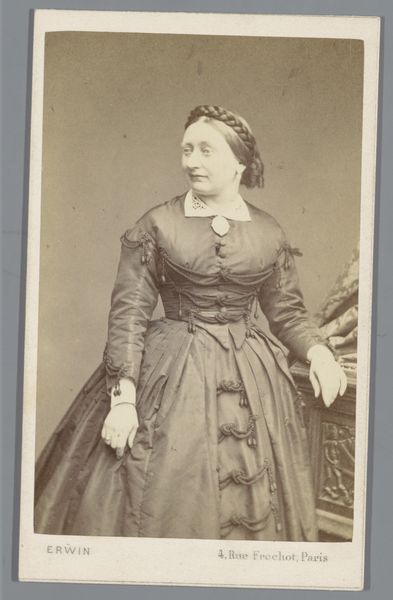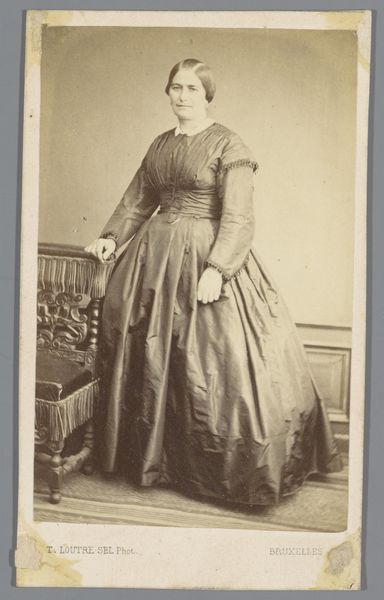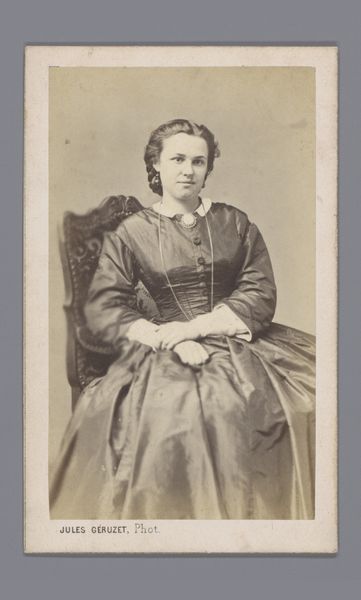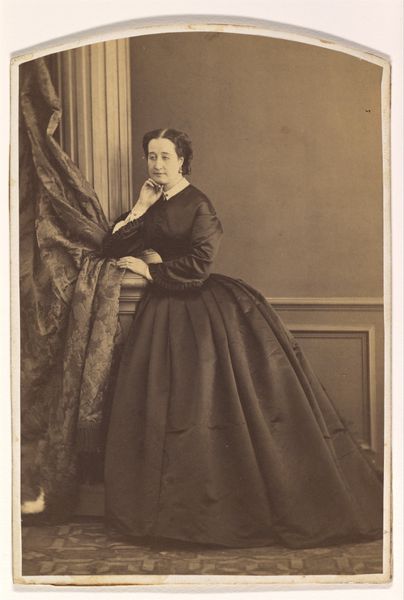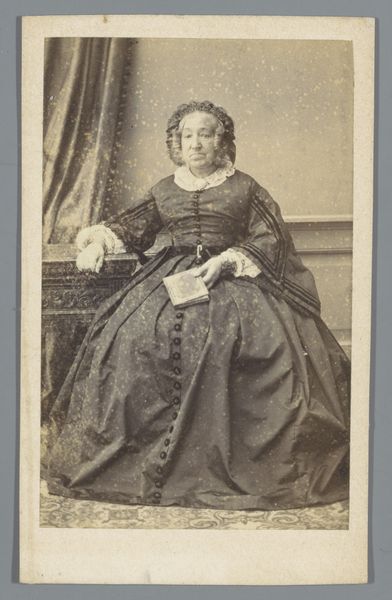
#
facial expression drawing
#
wedding photograph
#
charcoal art
#
portrait reference
#
united-states
#
animal drawing portrait
#
portrait drawing
#
facial portrait
#
portrait art
#
fine art portrait
#
celebrity portrait
Dimensions: 3 1/4 x 5 5/8 in. (8.26 x 14.29 cm) (image)3 3/8 x 6 7/8 in. (8.57 x 17.46 cm) (mount)
Copyright: Public Domain
Editor: This is a stereo card photograph from the late 1860s or early 1870s by Jeremiah Gurney, titled "Euphrosyne Parepa-Rosa (1836-1874)". It's a portrait of a woman, and I’m struck by how…staged it feels, but I am also interested in her direct gaze. How do you interpret this work? Curator: I see this piece as more than a portrait; it's a document of its time, embedded within the burgeoning celebrity culture and the societal constraints placed upon women. Euphrosyne Parepa-Rosa was a renowned opera singer, so her image carries a certain weight. What does her direct gaze tell you about how women navigated their roles? Editor: I guess her gaze makes me wonder about the power dynamics at play here. She’s the subject, being looked *at*, but also seems to be asserting herself through her eye contact with the viewer. Curator: Exactly! The studio portrait became a space where women, often confined to domestic roles, could present themselves and claim their identities, however carefully constructed. The trappings of the Victorian era—her dress, hairstyle, jewelry—speak to her social standing, while the slight tension in her expression might betray a certain awareness of the camera's, and society's, gaze. Editor: That makes me see the picture in a completely different light now! It's not just a pretty portrait; it's a woman engaging, or perhaps struggling, with the image she wants to project in a time of limited opportunity. Curator: Precisely. By situating this work within its historical context and the performance of gender roles, we can unpack layers of meaning beyond the aesthetic surface. Hopefully we can use art history to help examine not just art but society too.
Comments
No comments
Be the first to comment and join the conversation on the ultimate creative platform.
